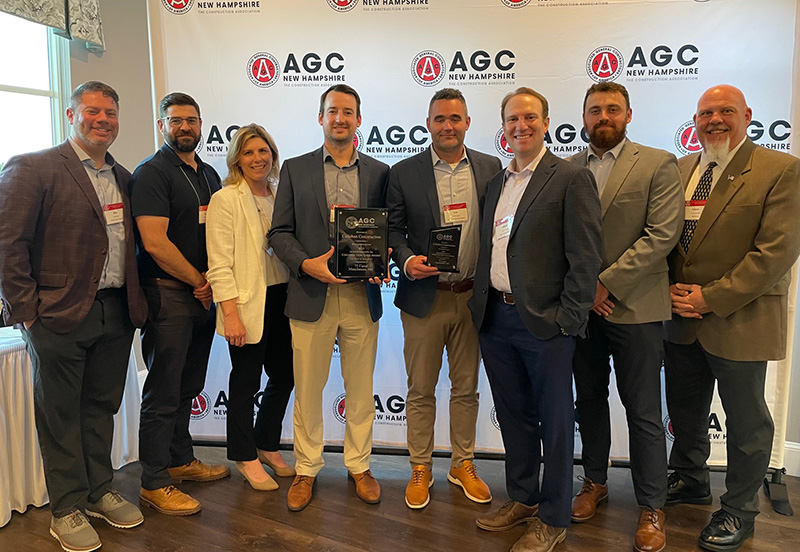News: Construction Design & Engineering
Posted: May 15, 2008
LEEDing the way to green building: What a green building is and how to best classify them
Unless you have been hiding under a rock for the past several months, you have no doubt seen or heard the term "green buildings" multiple times. Green building is the practice of increasing the efficiency in which we use our resources to build structures, i.e., energy, water and materials. The goal of green building is to reduce the building impact on human health and the environment by using better site design, construction, operation and maintenance during a building's life cycle. In short, the goal of green building is to produce better sustainable buildings. Perhaps the best way to ensure that a building receives recognition as a green building is to have it certified through the LEED Green Building Rating System developed by the U.S. Green Building Council (USGBC).
The USGBCs mission is to help transform the way buildings and communities are designed, built and operated to improve an overall better quality of life. The USGBC developed the national rating system LEED (Leadership in Energy and Environmental Design) as a tool for green building design and construction. LEED criteria address all building types and focuses on design in five areas: (1) sustainable development, (2) water savings, (3) energy efficiency, (4) materials and resources selection, and (5) indoor environmental quality. The USGBC contends that the LEED rating system has become the benchmark for design, construction and operation of high performance green buildings. It certainly has become the most recognizable green building rating system with over 3,000 buildings currently registered for certification.
Commercial buildings are eligible for LEED certification in one of the following categories: new construction, existing buildings, commercial interiors, retail and core & shell. A building may receive LEED recognition by receiving a rating as LEED certified, LEED silver, LEED gold or LEED platinum. A LEED rating is achieved through earning points in each of the five areas noted above and also in the innovation and design process. Each category has its own system checklist. In order to receive a LEED designation, an applicant must obtain a certain number of "points" set forth on the checklist. The more points accumulated, the higher the rating and certification status.
To become a LEED certified building, an applicant needs to register its project with the USGBC and declare its intent to have a project LEED certified in one of the applicable categories. Projects can be registered either online at www.usgbc.org or by mailing a project registration to the USGBC headquarters in Washington, D.C. Once registered, the applicant will receive information about the certification process including the checklist, required documentation and the timeline of the rating process. Following completion of the certification process, the applicant will receive a final LEED review, which will include the overall LEED score. If the score is over a certain number, then the project is deemed LEED certified. By way of example, in the new construction category, a score as follows earns a corresponding rating of: 26-32: certified; 33-38: silver; 39-51: gold; 52-59: platinum. Once LEED certified, the project is entered into the USGBC's LEED registry and may be held out to the public as a certified green building.
If the LEED certification process comes as news to you, do not worry, you are not alone. However, it is important to note that more and more businesses and local governments are looking to incorporate aspects of the LEED certification process for new development. In 2005, governor Carcieri issued Executive Order 05-14, in which he ordered that the design, construction, operation and maintenance of any new, substantially expanded, or renovated public building must be developed in accordance with LEED standards and "shall endeavor to qualify for certification at or above the LEED silver level." Additionally, municipalities are starting to work into their zoning codes requirements that new major developments incorporate LEED standards. While, the requirements do not go so far as to demand actual LEED certification (yet), municipalities are incorporating requirements that new major development projects be at least LEED certifiable. In January 2007, the city of Boston amended its zoning code to include additional requirements that major building projects must be planned, designed and constructed to achieve the level certified, using the LEED rating system most appropriate for the type of development project. From a marketing standpoint, developers are discovering that there are also beneficial aspects to a LEED certified building, as more and more individuals seek to work in healthier environments which provide better air and water quality. To date in R.I., there are 22 projects registered with the USGBC for LEED certification and that number will continue to grow as Rhode Islanders become more educated about green building.
Elizabeth Lewis is an associate at Partridge Snow & Hahn LLP, Providence, R.I.
MORE FROM Construction Design & Engineering
Nobis Group awards Robinson and Moreira STEM scholarships
Concord, NH Nobis Group, a 100% employee-owned consulting firm specializing in engineering and environmental solutions across the Northeast, has named the recipients of its 2025 STEM Scholarship: Andie Moreira of

Quick Hits
Columns and Thought Leadership

Careers in Construction Month focus on training and safety - by Joe Camilo
October is Careers in Construction Month, and rarely has it been more consequential. According to our chapter’s national parent organization, the construction industry needs to attract half-a-million new workers in the coming year to meet demand. Addressing that need is a huge job, but we at ABC MA are trying to do our part.

The design-build advantage: Integrated interior design solutions - by Parker Snyder
When it comes to corporate interior spaces for both commercial and industrial projects, partnering with a design-build firm with in-house interior design services can offer clients many benefits. Unlike traditional delivery methods where interior designers operate independently from the design and construction teams, often creating a longer project timeline as cost negotiations and revisions ensue

The rise of incubators and co-working spaces: The latest in life sciences - by Matt Combs
In recent years, the life science industry has witnessed a shift in how companies operate and innovate. One of the key driving forces behind this transformation is the emergence of incubators and co-working spaces specifically tailored to meet the unique budget and schedule needs of startups.

Ask the Electrician: Is summer a prime time for commercial electrical maintenance?
The answer is “Yes!” While January marks the official new year, many businesses view September as a fresh start. This makes summer an ideal time for commercial property owners to schedule long-term electrical maintenance projects.







.png)